Mountain bikes feature different amounts of suspension travel depending on the type of riding they're designed for.
Suspension travel describes the amount of movement a suspension fork or rear shock has. It is usually a measurement of how far the wheel axle moves in a vertical or near-vertical plane as the suspension compresses.
Depending on the discipline of riding the bike is designed for, the suspension travel can vary from 80 to 200mm. While more travel may seem better, helping you soak up lumps and bumps, it can be a hindrance if your riding includes lots of climbing or you benefit from a light, responsive bike.
This means deciding on the right amount of travel for your needs can be difficult, but there are a few factors to keep in mind, including your riding style and the type of trails and terrain you'll be tackling.
Bike manufacturers design their mountain bikes around different travel lengths, tailored to specific terrains or riding disciplines, and categorise the bikes accordingly. As a result, looking at the different categories of mountain bikes, their intended application and travel length is a handy way to determine how much travel you need and what bike you should get.
In this guide, we’ll explain the different mountain bike categories and how much suspension travel they typically have.
Cross-country mountain bikes
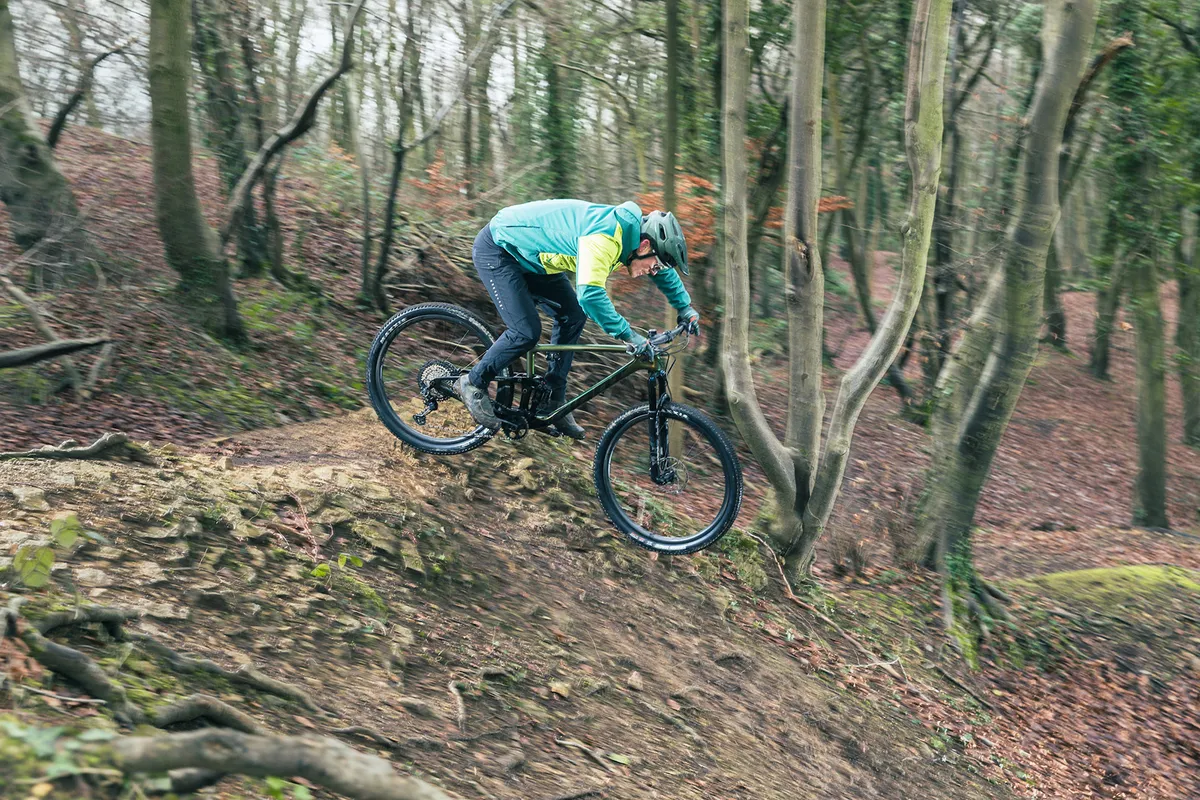
The best cross-country mountain bikes are designed to compete in high-level, fast races, where lightness and pedalling efficiency are often the keys to success.
Typically, cross-country bikes have featured 80 to 100mm of travel. Because cross-country race courses have become more extreme and technical, it is now common to see bikes designed around 120mm travel front and rear, such as Scott’s Spark RC.
Using less suspension travel than other mountain bikes means cross-country bikes can be built with a lighter frame construction because less reinforcement is needed to deal with the lower frame articulation. This helps riders race up the kinds of inclines that characterise XC races.
The short-travel forks used on cross-country bikes also help to keep weight down because they utilise a lighter chassis and narrower stanchions, usually 30 to 32mm in diameter.
Stanchions are the part of the fork connected to the crown and remain rigid to the bike while the lowers move up and down over them.
The trade-off for this weight saving comes in the form of fork flex, which impacts the directness of steering inputs and the overall ability of the fork to perform in gnarlier terrain as friction levels build on the seals.
A short-travel fork will also run out of travel quicker compared to one with more travel. Although setup and damper performance will dictate a lot of factors in how proficiently it absorbs bumps, less travel means it won't absorb bigger bumps as well as a long-travel fork.
Hardtail mountain bikes are also well-represented in cross-country, because rigid frames allow for the highest pedalling efficiency. However, the traction and descending ability of full-suspension bikes make them desirable to many riders.
Downcountry mountain bikes
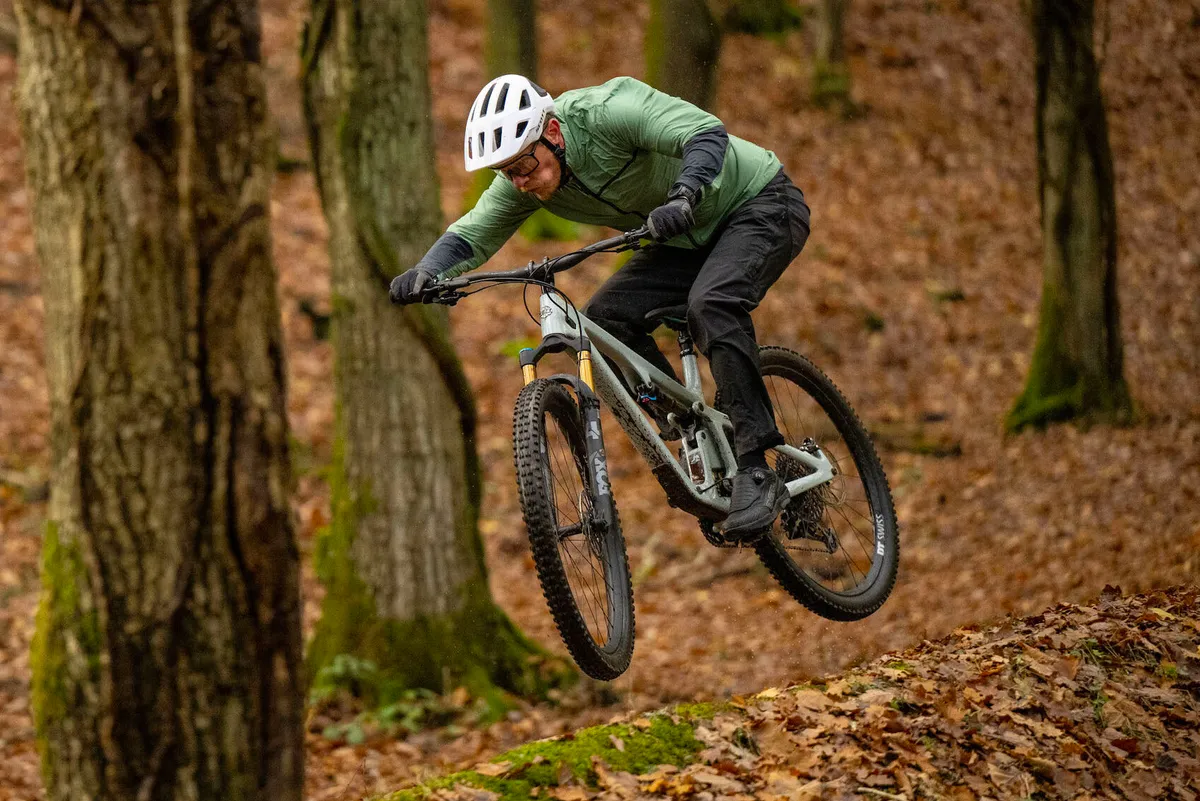
Downcountry bikes aim to balance a cross-country bike's efficiency with a trail bike's downhill capability.
‘Downcountry’ is a relatively new mountain bike discipline and isn’t that well defined as a result. But in terms of suspension, these bikes range from beefed up cross-country at 110mm of travel, to lightweight trail with around 130mm front and rear travel.
Having slightly more travel than an outright cross-country bike means downcountry bikes are more capable on descents. However, with shorter travel than trail bikes, they still offer greater pedalling efficiency than burlier bikes.
Downcountry bike frames can be made lighter than trail bikes because the demand on the frame is less. This means they require less material in their construction because they don’t require the same amount of strength as a trail or enduro bike needs.
Downcountry bikes usually feature stronger, stiffer forks, with thicker stanchions, usually 34mm in diameter. This gives higher levels of rigidity to the fork, making steering inputs more direct, although concessions are still made to weight savings.
Trail mountain bikes
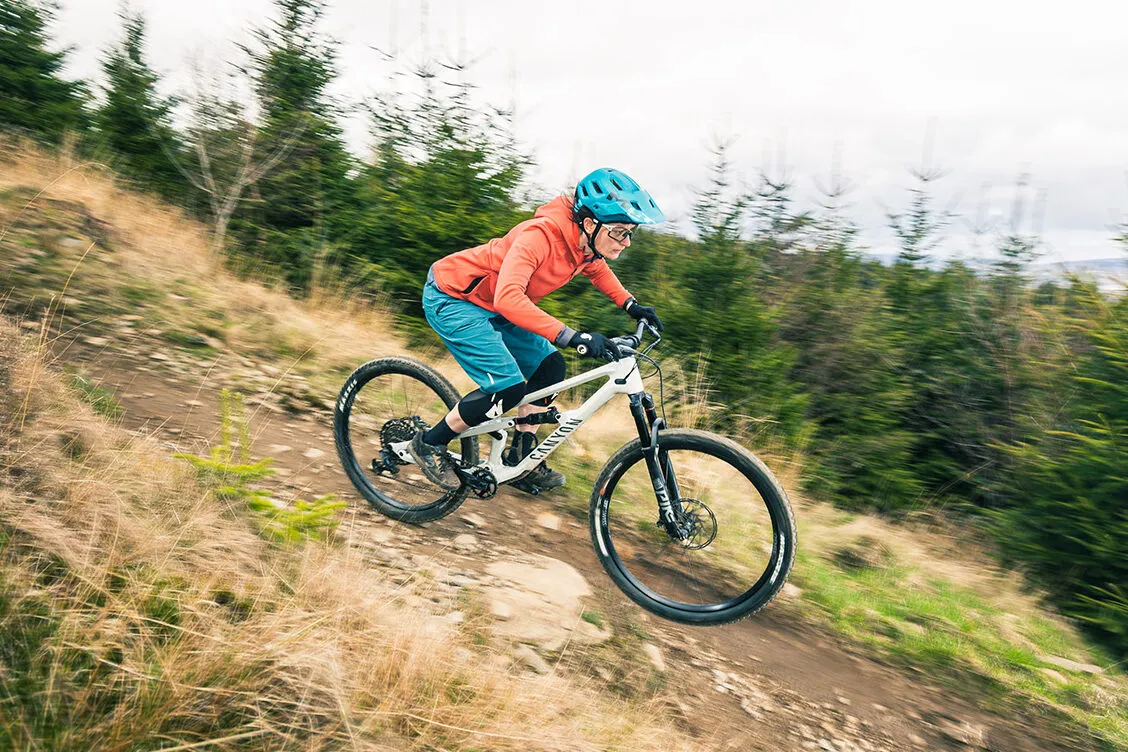
Trail bikes are one of the most popular types of mountain bike. They are designed to straddle the line between enduro bikes and cross-country bikes, providing a ride that’s fun but capable.
Confident on descents and fairly capable on climbs, trail bikes typically have between 120 and 160mm of suspension travel.
Trail bikes at the longer end of the suspension-travel spectrum cross the boundary into all-mountain. Typically, these bikes will feature beefier frame construction to deal with the added suspension travel.
The optimum amount of travel depends on what terrain or trails you like to ride, and where you’d like to progress with your riding. 140mm is ideal for even the toughest trail centres, with more travel being required for gnarlier ambitions.
Forks with mid-sized stanchions, either 34mm, 35mm or 36mm in diameter, are common on trail bikes. These shift the balance away from lightness toward rigid stability for better handling while descending. Less flexibility in the fork will mean more direct steering input, making the bike feel more planted through the rough stuff.
Enduro mountain bikes
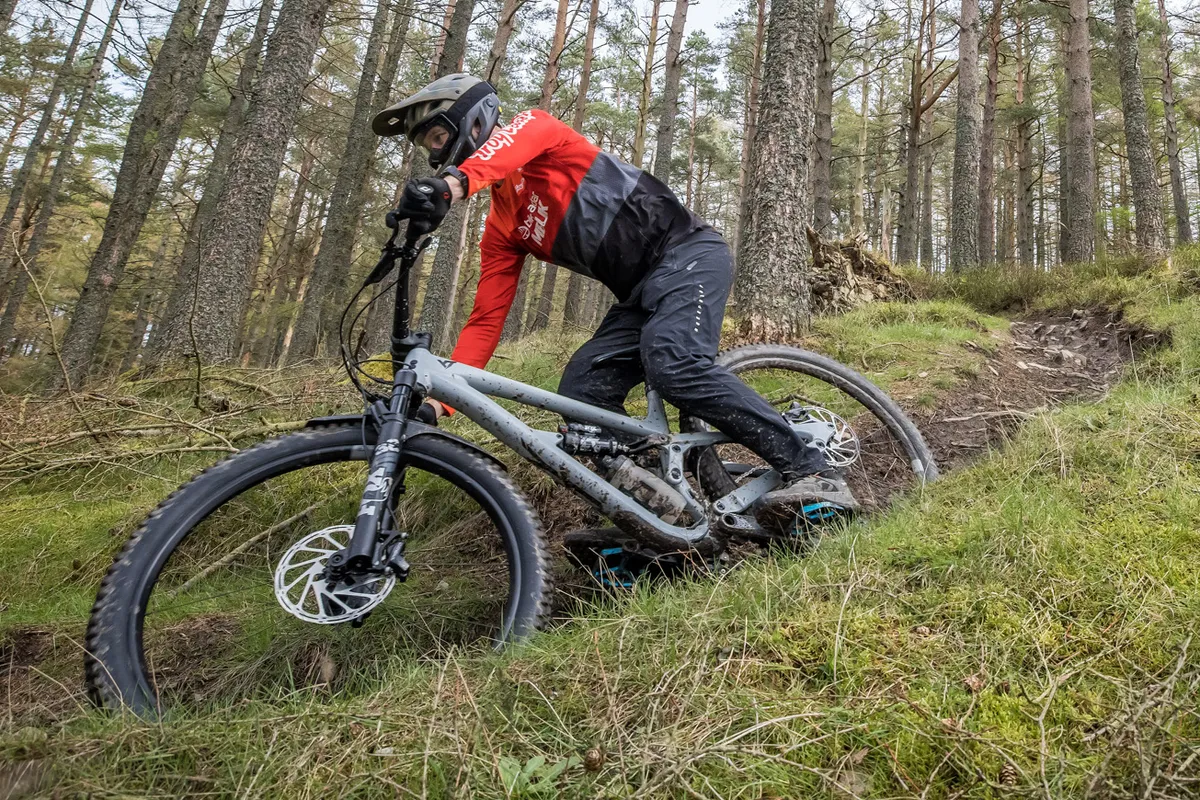
Enduro bikes are designed to meet the demands of enduro racing, which consists of multiple downhill stages that riders have to reach within a set time limit. As a result, enduro bikes have to perform well on technical descents while providing a decent pedalling platform to get you to the top of the trail in good time.
Travel for enduro bikes starts at 150mm and ranges up to 180mm. There is a 190mm-travel version of RockShox’s enduro-focused ZEB fork, but you’re more likely to see this attached to a freeride or bike park bike.
Enduro bikes require a burly frame construction in order to cope with the demands of downhill trails.
Head tubes have to be stronger to deal with the extra force coming from the long-travel fork, while the rear linkage has to be able to support the extra articulation.
This added frame construction makes the frame heavier, impacting efficiency when going uphill, but the pay-off is worth it when coming back down.
Forks within this travel range prioritise rigidity over weight savings, with thicker stanchions of 36mm to 38mm, providing direct steering inputs and a solid feel as you ride over gnarly terrain.
Downhill mountain bikes
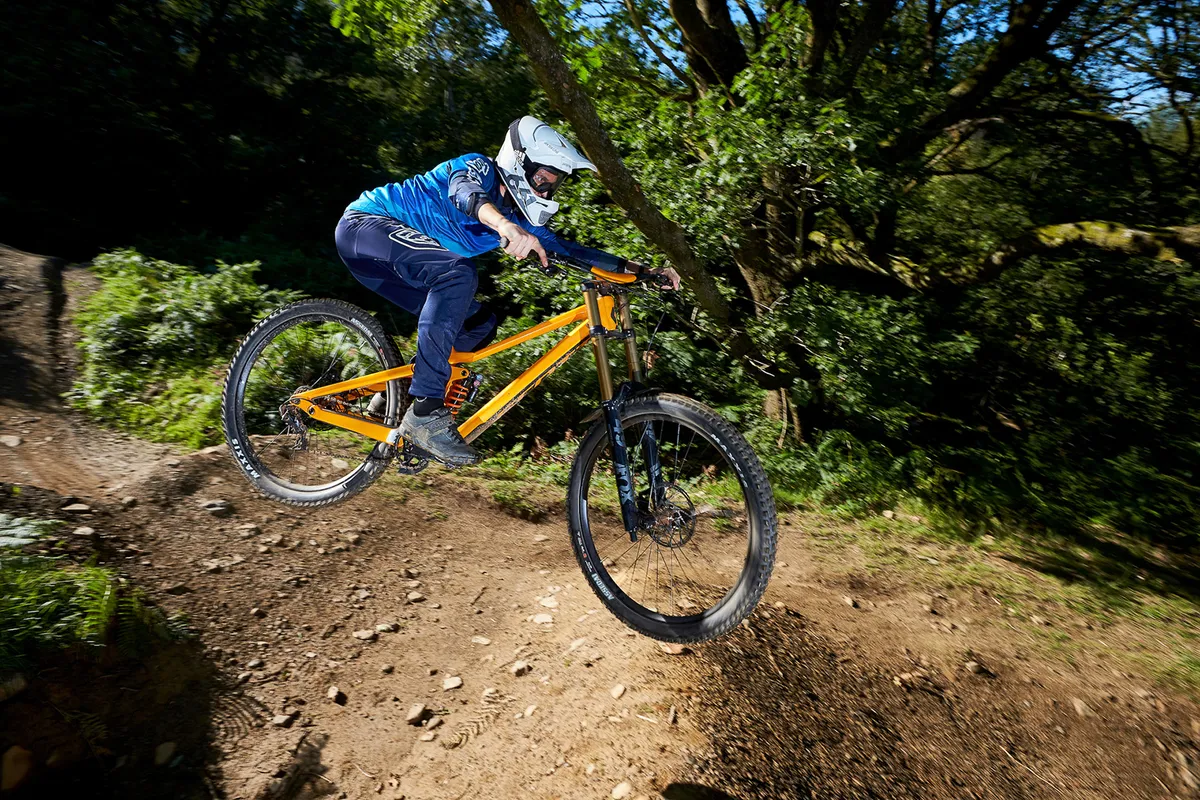
Downhill bikes are designed for, you guessed it, riding downhill. The discipline doesn’t require the bike to be pedalled on uphill or even flat terrain, enabling designers to focus solely on providing the best platform for descending steep and technical trails.
These bikes feature some of the longest suspension travel, ranging from 180 to 200mm, helping to protect riders from large, repeated impacts.
Frames have to be built to the highest strength levels to cope with the impacts you experience on downhill trails. Although downhill frames are heavier than those intended for other disciplines, it's less important to have light frames because you’re not pedalling them uphill.
Downhill forks feature the thickest stanchion, ranging from 35 to 40mm in diameter, because they deal with the most extreme terrain and require the greatest rigidity.
Weight isn’t a big issue for downhill bikes, so the added heft is worth the trade-off for the performance gains.
The forks on downhill bikes have a dual-crown design, meaning the fork mounts above and below the head tube, as opposed to single-crown forks, which mount only from below. This adds more torsional stiffness to the fork, helping to keep steering inputs direct through the toughest terrain and providing strength for big impacts.
Electric mountain bikes
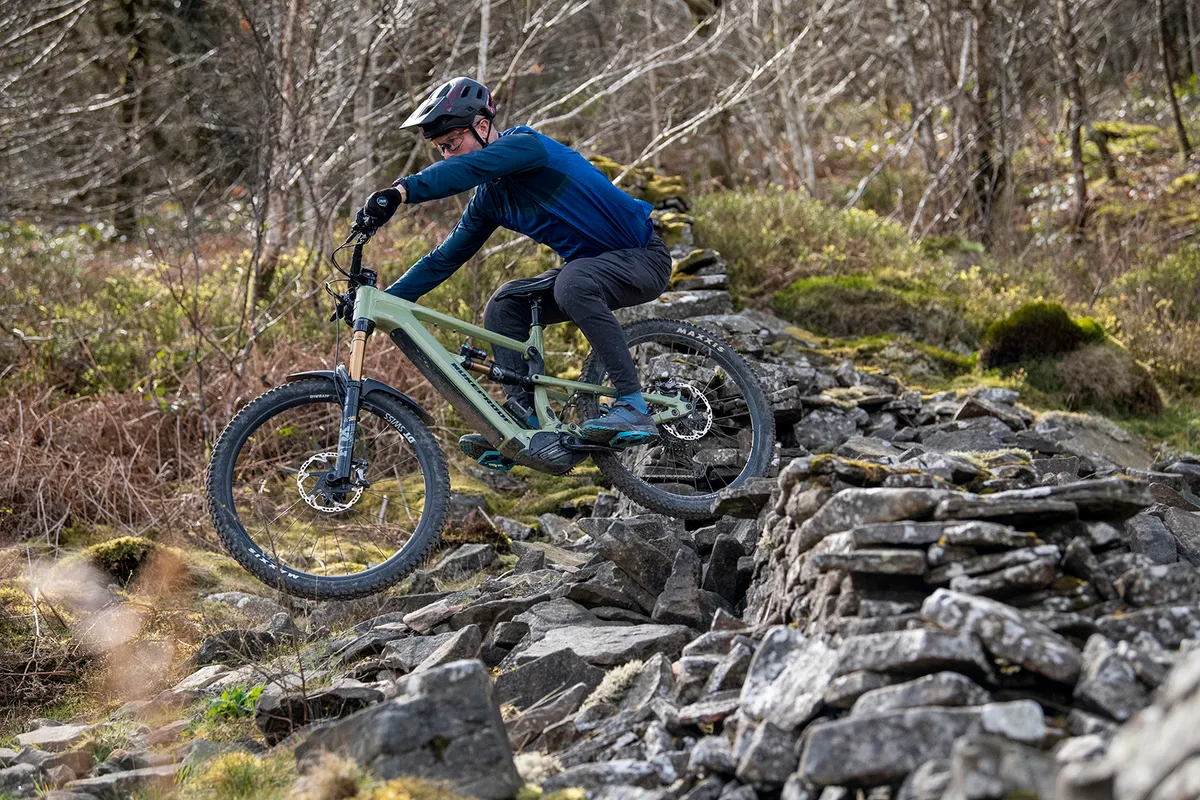
Electric mountain bikes are heavy, even compared to downhill bikes. The added weight a battery and motor bring means frames as well as components have to be engineered to cope with the extra weight – and contribute even more weight to the bike in the process.
Electric bikes can be categorised by the other disciplines featured in this article and will tend to feature the travel of that discipline.
The best electric mountain bikes will feature e-MTB specific forks and shocks, some with thicker stanchions for rigidity, and custom tunes that are suited to the heavier weight of the bike.
Because you’ll have a motor, there won’t be a trade-off in having a bike with more travel (and therefore weight), with the bike taking up the burden on the hills.
What about hardtail mountain bikes?
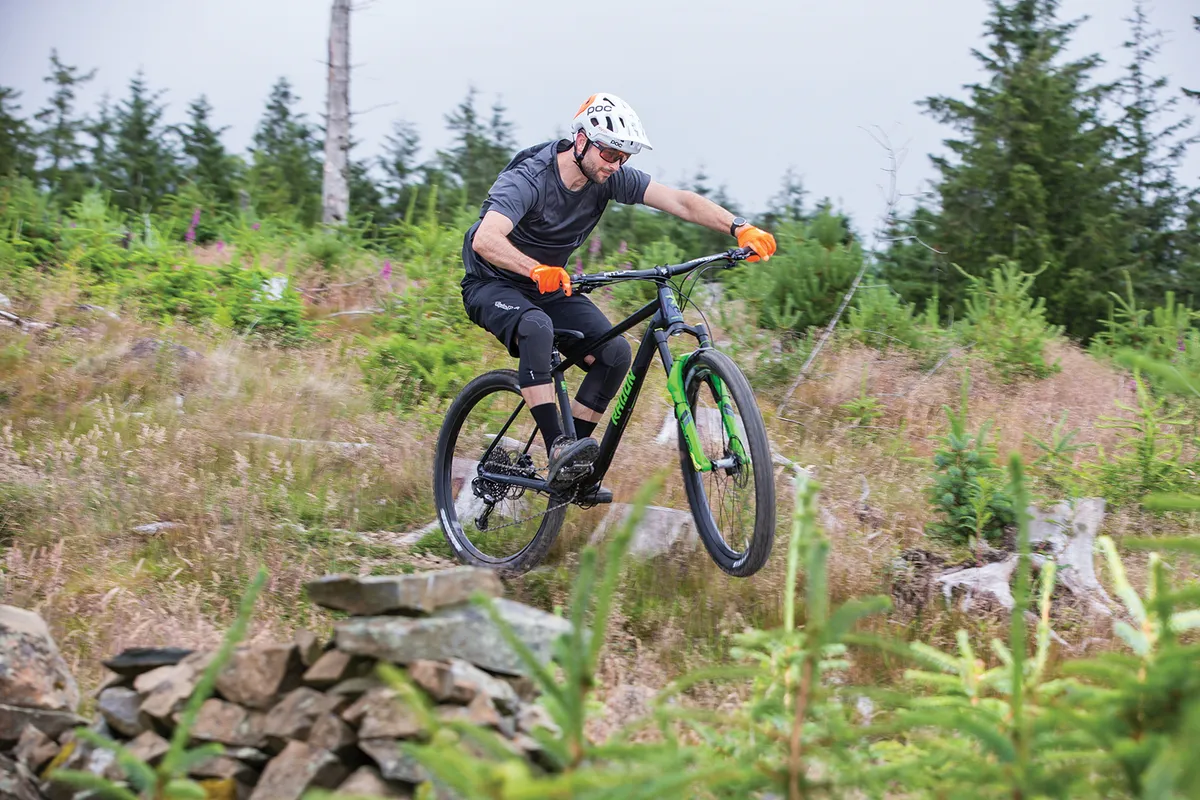
Hardtail mountain bikes have a suspension fork and a rigid rear end. They can be seen in a variety of disciplines, though are mainly represented in the cross-country and trail disciplines. They are also popular when it comes to budget mountain bikes because the simplicity of their design and less suspension means less cost.
As with other types of mountain bikes, fork travel is usually dependent on discipline. Cross-country hardtails typically have 100mm of travel, but more aggressive hardtails can have suspension travel of up to 150mm.
Some manufacturers will design frames with flex points in the rear triangle, allowing for vertical compliance in the frame. This improves comfort when sat in the saddle, and to a smaller extent rear-wheel traction while climbing.
